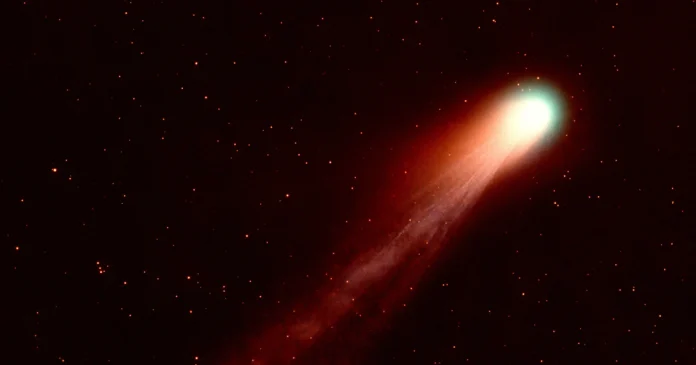
Case Intel
- Harvard astronomer, Avi Loeb presents nine data-driven “anomalies” suggesting that 3I/ATLAS—a massive interstellar object now racing past the Sun—could be under intelligent control.
- The evidence may not prove alien origin beyond a reasonable doubt, but Loeb’s data arguably satisfies a prima facieshowing of technological possibility worthy of continued investigation.
By Samuel Lopez | USA Herald
WASHINGTON, DC – In what would be the most extraordinary evidentiary hearing in history, Harvard astrophysicist Avi Loeb has already started to advance the necessary framework for evaluating whether interstellar object 3I/ATLAS is “intelligently guided.” If placed before a judge, the issue would not be whether aliens exist—but whether the evidence meets a credible threshold of legal and scientific standards.
Loeb’s argument presents nine “counts of anomaly.”
- Trajectory Alignment— 3I/ATLAS’ orbital path sits within five degrees of Earth’s plane, statistically rare (0.2%).
- Planetary Flybys— Its precision encounters with Mars and Jupiter suggest purposeful navigation.
- Anti-Tail Phenomenon— A tail pointing toward the Sun defies natural comet geometry.
- Gigantic Mass and Volume— A nucleus over three miles wide and 33 billion tons heavy implies engineered structure.
- Nickel-Iron Ratios— The metallic composition exceeds natural vaporization thresholds, consistent with industrial alloying.
- CO₂-Dominant Composition— Unusual chemical profile potentially indicative of synthetic material.
- Negative Polarization— Optical behavior never before recorded in comets.
- Wow! Signal Proximity— Arrival direction within nine degrees of the 1977 radio anomaly.
- Blue Spectral Surge— A “hotter-than-the-Sun” brightness during perihelion, suggesting internal energy.
In legal terms, these constitute circumstantial evidence—not conclusive proof, but a coherent narrative supported by measurable data.
NASA and other mainstream scientists, on the other hand, argue res ipsa loquitur—meaning “the thing speaks for itself.” 3I/ATLAS acts like a comet; therefore, it is one. They cite consistent CO₂ outgassing, predicted orbital decay, and no verified electromagnetic emissions.


